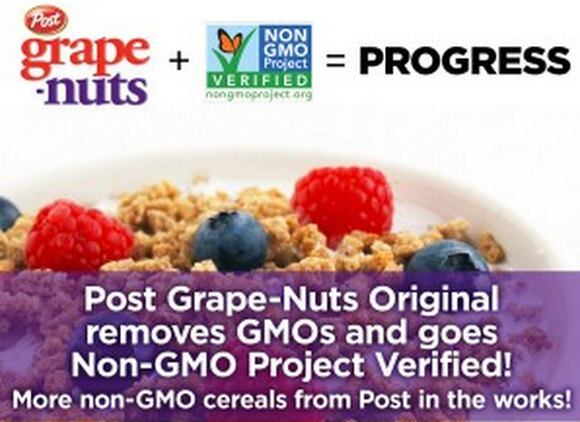Speaking to FoodNavigator-USA at the IFT Show in Chicago last month, Catherine Adams Hutt, PhD, RD, chief science & regulatory officer at Sloan Trends and principal at consultancy RdR Solutions, said: "The move away from fortification is very troubling.
“Speaking as a registered dietitian as well as a food industry member, we need to make sure that we’re providing nutrients, particularly those that are in short supply and under-consumed by consumers. Often we get our added calcium and vitamin D for example from fortified foods.
“The drive away from fortification we believe is driven by consumers’ interest in clean label and getting something that’s minimally processed without chemical-sounding ingredients included in it. These things sound scary to consumers.”
Dr Adams Hutt added: “They know that vitamin C is healthy but are concerned about ascorbic acid which is of course just the chemical name for vitamin C. That’s not logical, but we need to be sensitive to consumers’ opinions and we need to work to educate them where we can and provide the nutrients that they need in a format in which they will consume and enjoy them.”
Obsession with clean labels, non-GMO, distracts from bigger nutritional challenges
In a presentation delivered to IFT delegates exploring this and other topics, Dr Elizabeth Sloan, founder and CEO at Sloan Trends, added: “Marketers that plan to cut back on adding nutrients/fortification are clearly doing their customers a disservice with the 11 nutrient shortfalls in the US.”
And while it is correct to argue that consumers prefer to get their nutrients from whole foods, she said, they’ve been saying that for 30 years, but analysis of NHANES data suggests they are not making much progress in achieving this goal, making fortification as relevant as ever.
Meanwhile, the industry obsession with cleaning up labels, minimal processing, non-GMO and organic is clearly addressing consumer concerns, but is not addressing arguably more substantive nutritional deficiencies in the US diet, she claimed.
“There are 11 nutrients now consumed below adequate levels in the US. [But] fixing the problem will be difficult as consumers are hell-bent on avoiding additives/artificial ingredients, and GMOs at the moment, and thus these nutritional concerns [lack of fiber, vitamin D, potassium] are currently on the back burner.”
According to the Mintel Global New Products Database (GNPD), 16.02% of new food and beverage products launched in the US in 2015 made a vitamin/mineral fortified claim, compared to 18.74% in 2011, a slight drop. However, these figures don't cover existing products in which vitamins and minerals have been dropped during reformulations.
How big is the gluten-free market really?
She also urged manufacturers to view reports highlighting the potential size and growth of some ‘free-from’ markets such as gluten-free with caution, given that they are based on scanner data and do not explore purchase drivers (eg. did you really buy that bar because it was gluten-free?)
“We have to remember that our scanner tallying systems record sales of all products with, for example, a gluten-free claim, regardless of whether that person bought the product because it was gluten-free or for a new flavor or due to an in-demand ingredient such as whole grains.
“These numbers are grossly inflated and are misleading food manufacturers.”

Manufacturers could be ditching vitamins and minerals for a variety of reasons, from cost issues to a desire to clean up labels (many vitamins are 'chemical-sounding'). However, some commentators have argued that the non-GMO trend* is also driving some companies to drop certain vitamins, although the brands that they cite have not confirmed this.
For example, Post Foods’ Grape Nuts (click here) are now non-GMO, but they also no longer include Vitamin A, vitamin D, vitamin B12 or vitamin B2 (Riboflavin). Original Cheerios, meanwhile, dropped Riboflavin from the ingredients list after going non-GMO in 2014.
Commenting on the Cheerios reformulation in 2014, Dr Wayne Parrott, professor of crop science at the University of Georgia, said it was depressing to see that the new product was arguably less healthy given the lower vitamin content: “Cheerios went from being a major source of vitamin B2 to being almost zip."
*Some vitamins are produced from GE micro-organisms, or from micro-organisms grown in fermentation tanks using feed stock from GE sugar beet or corn. Vitamins that can be produced via fermentation include vitamin B12, B2 (Riboflavin), ascorbic acid (vitamin C), and beta-carotene, while some forms of vitamin E can also be produced from soy (which might be GM).
I think there will be a long overdue move to functional foods and drinks
So where do we go from here?
Says Dr Sloan: “I think there will be a long overdue move to functional foods and drinks. After all, in the US and most of the world, Boomers are turning 70 and confronted with trying to manage 9.5 conditions per person.
“On the younger end, the Millennials are having babies and we know that drives them back to nutrition and healthier eating for sure. Moreover, the new ‘fit’ consumer performance phenomenon will create a need for higher performing products.”
Having trouble viewing the video? Watch it on YouTube instead!
